Home •This week’s blog • Time for tea • Blackbirds • Border collies
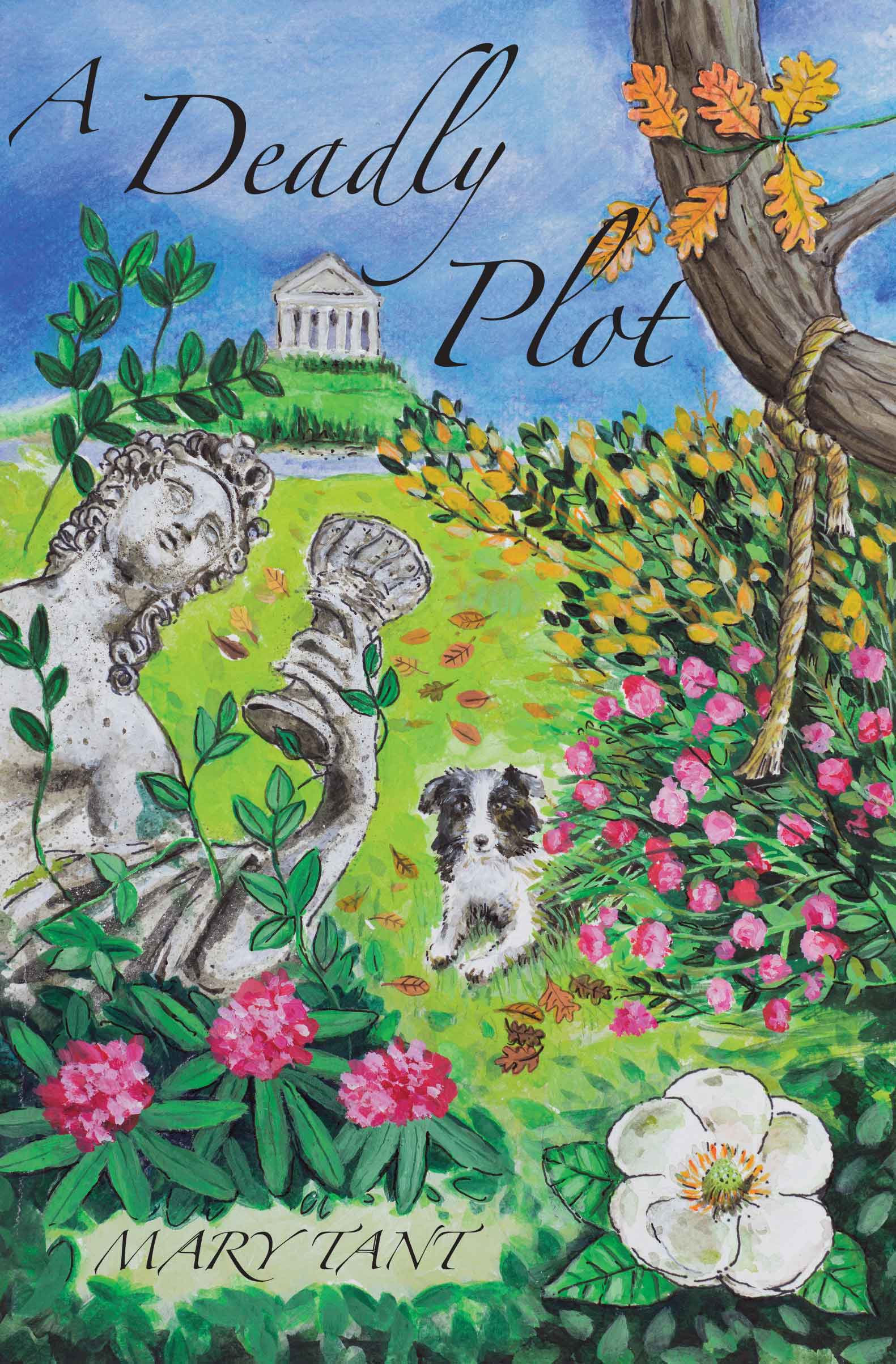 Mary Tant's next Rossington mystery – A Deadly Plot – was published on March 17th.
Mary Tant's next Rossington mystery – A Deadly Plot – was published on March 17th.
Visit your independent bookshop or friendly crime specialist for a copy – or order it from the local library.
March 2016
Wednesday 2 March 2016
The landscape was dulled under a cloudy sky and the lake at Tisbury was grey as tarnished pewter. Tiny patches of white on the water were the only signs of the tufted ducks that otherwise blended into the gloom. Two swans were brightly white against the muddy edge of an island, where they stood, posing motionlessly, necks held in an artistic curve.
Thursday 3 March 2016
First there was one buzzard, perched right at the tip of a tree above the cutting slope of the dual carriageway, staring down at the grass that must have sheltered voles and mice. Then further along there was another keen to get to a similar vantage point, picking its way on foot up a branch to reach the top of the tree it fancied. Its wings were held wide, exposing the white underneath, and flapped occasionally as the buzzard retained its balance, just like a tightrope walker.
Friday 4 March 2016
From time to time heavy flurries of sleet flew in hurrying white clouds at the car as we drove westward. When they passed by the sun shone again, but there were still even brighter white clouds on the banks we passed, where blackthorn has come into bloom on some bushes.
The daffodils are in full bloom as we drove along the high ridge at the toe end of Cornwall, so there were fields of bright yellow on either side of us. Closer too, the flowers were seen growing in tidy ranks, waiting to be picked by hand.
Saturday 5 March 2016
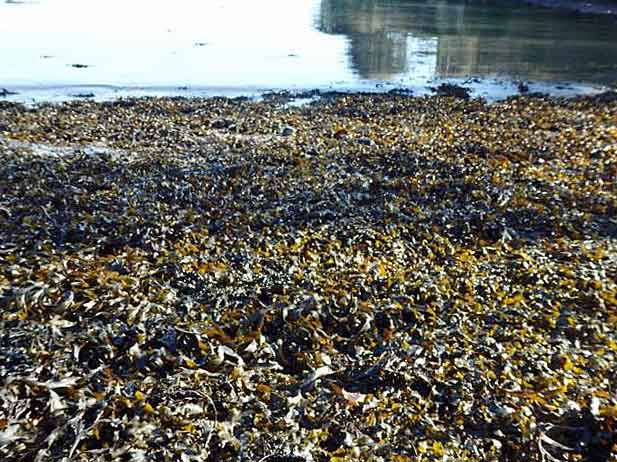
Shells crunch underfoot on the small stony beach at Penarvon Cove in Cornwall. There are lots of white ones, and pairs of oily black mussel bivalves. And nearby is a thick springy carpet of brown seaweed, where Bryn, my young Border collie, likes to leave his ball for me to collect.
Sunday 6 March 2016
It’s easy to see why Daphne du Maurier’s Frenchman named his ship The Curlew. Although I rarely see the bird, with only an occasional sighting of one flying inland with the tide, or probing the mud flats when they are exposed, the bird’s lonely cry rings out along the hidden Helford creeks.
Today’s visible sentinels were little egrets. One was paddling along the edge of the channel between wide expanses of mud in the creek as the tide turned. Three perched in the twisted bleached branches of a dead tree, while two more waited on the mud below.
Monday 7 March 2016

A pair of little sanderlings ran furiously up the beach, just ahead of the curling white foam of the wave that was sweeping up behind them. Inevitably the water overtook the birds and they stopped to potter about in the shallow water before it retreated to re-gather its forces for another foray in.
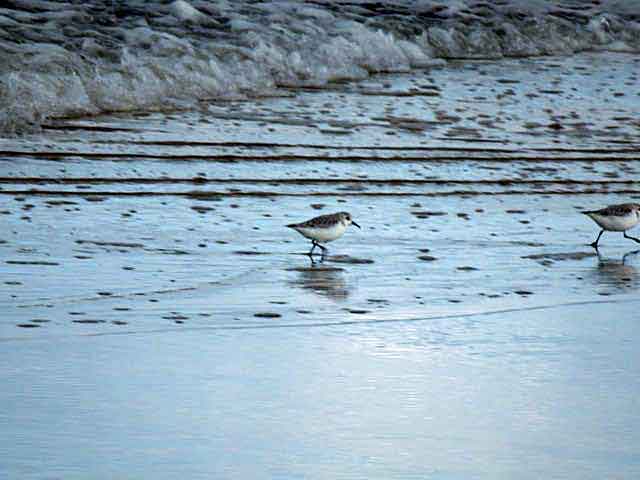
It was an idyllic morning on the Cornish beach. There wasn’t a hint of wind, the sun shone from a blue sky, the water was shades of deeper blue and turquoise. The waves came rolling in on the tide, rising and breaking with a crest of white before sweeping up the sand. And apart from the sanderlings, the miles of sand were almost deserted during our first hour there.
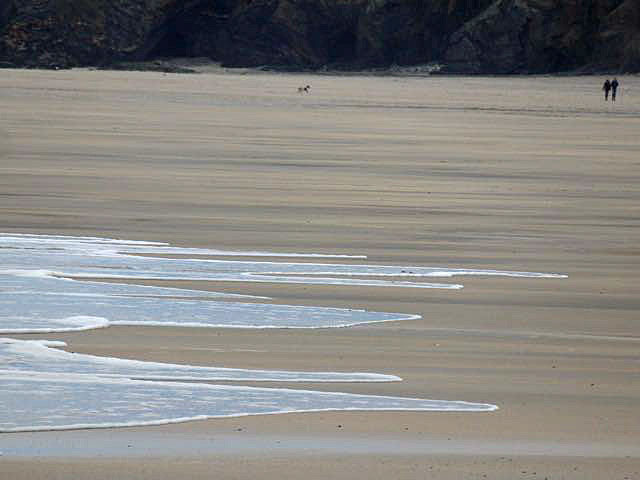
Tuesday 8 March 2016
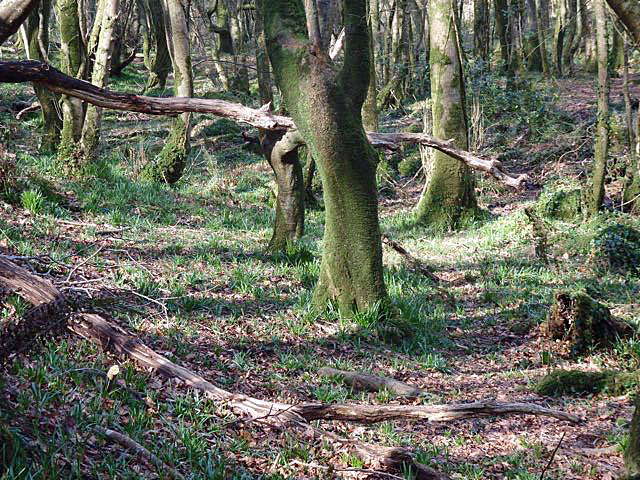
The Cornish woodland in spring provides glimpses of landscape that will be hidden soon when the burgeoning bluebells cover the ground. There are clear tracks down the steep slope that is still spread with leaves among the new green shoots.
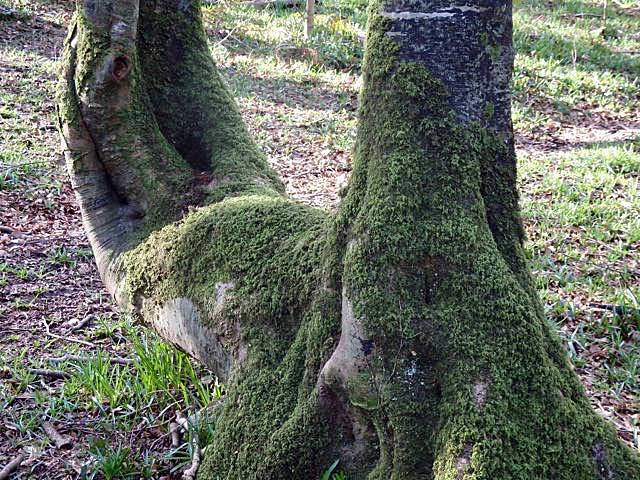 There are the fallen trees and stumps, covered with moss, draped with ivy. There is the strangely shaped beech, sentinel beside one of the paths. There are the greened stones, piled in untidy heaps, signs of earlier human life here. Wherever I look there’s something to spot, which will soon have to be looked for more closely.
There are the fallen trees and stumps, covered with moss, draped with ivy. There is the strangely shaped beech, sentinel beside one of the paths. There are the greened stones, piled in untidy heaps, signs of earlier human life here. Wherever I look there’s something to spot, which will soon have to be looked for more closely.
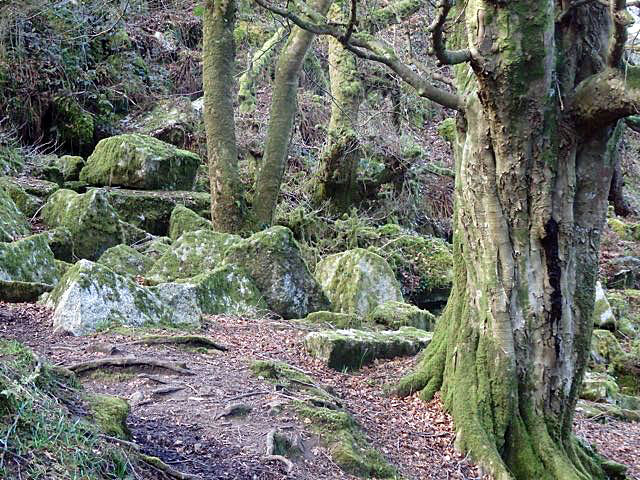
Wednesday 9 March 2016
The wind was so strong I could barely stand in the open fields, so we walked through the woodland. I was alarmed to find that the trees here, relatively sheltered on the steep eastward slope, were being battered by the force of the wind. Twigs and slender branches rained down on us, and a sharp screaming sent Bryn, my young Border collie, scurrying briefly back to my side, his tail between his legs, as a tree resisted the wind that was trying to topple it over.
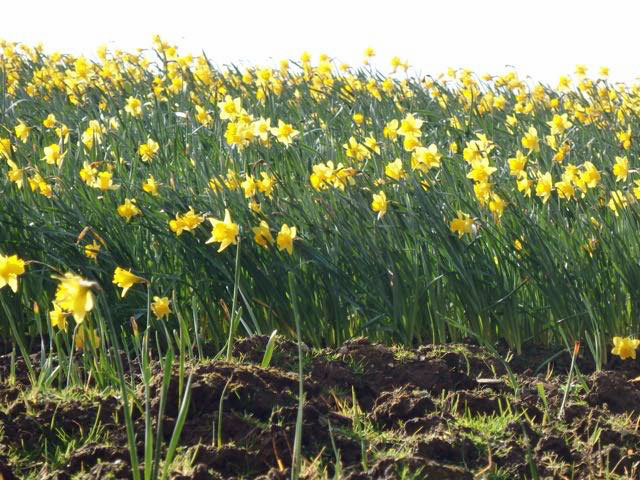
It was with relief that I gained the shelter of a sunken path beside a high Cornish wall. Daffodils nodded their golden heads towards us from the field above, much used animal tracks marked the wall, and entrance holes showed where various creatures were no doubt at home, sheltering from the storm.
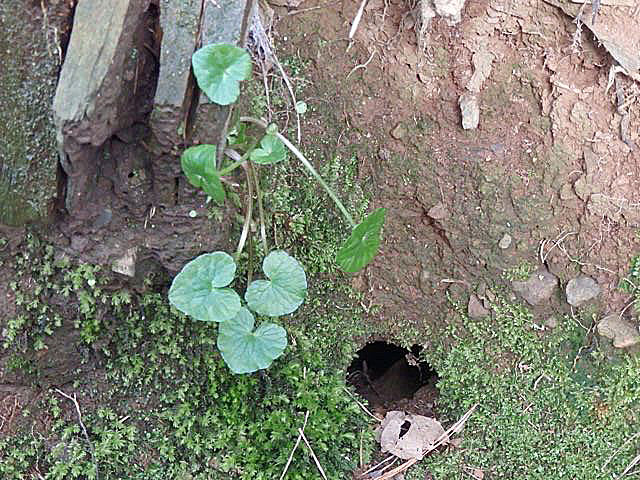
Thursday 10 March 2016
It was newly dark as we drove down the sunken Cornish lane. The car lights picked up a black and white pedestrian ahead of us, trotting smartly down the centre of the lane. It was a badger, out early, his stubby tail swinging as he moved. He turned to face the car for an instant, then moved on more swiftly. We moved slowly behind, then stopped altogether as he began to hesitate. He turned back and found the path up the bank that he’d missed, and scampered up the steep incline with enviable ease to disappear from sight.
Friday 11 March 2016
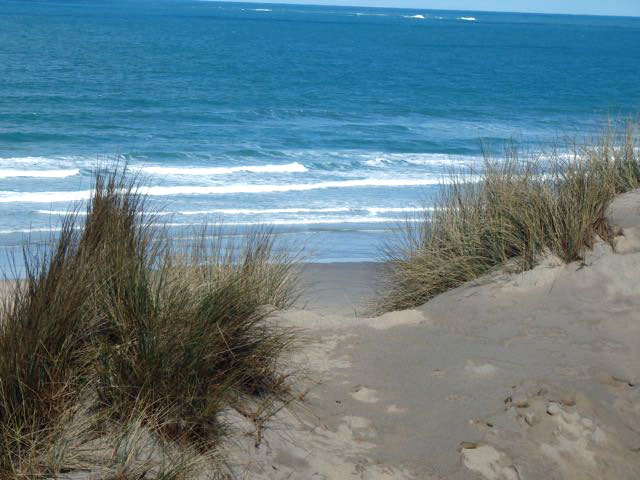
As we entered the sand dunes we found the landscape had changed. The recent storm had blown tons of sand around like a child having a tantrum in a sand pit. The way through the marram grass and down onto the beach had changed from a low hill to a mountain, and its sudden transformation was disorientating.
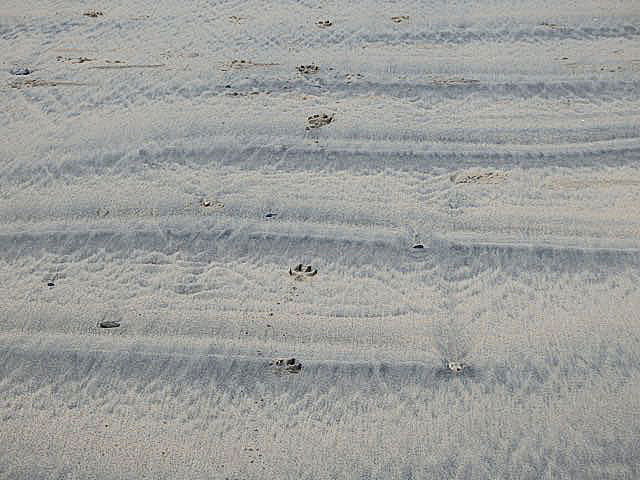
It was a relief to get down onto the familiar wide stretches of beach. Here the waves had left striped patterns in the sand, echoed by the lines of quartz in a granite stone.
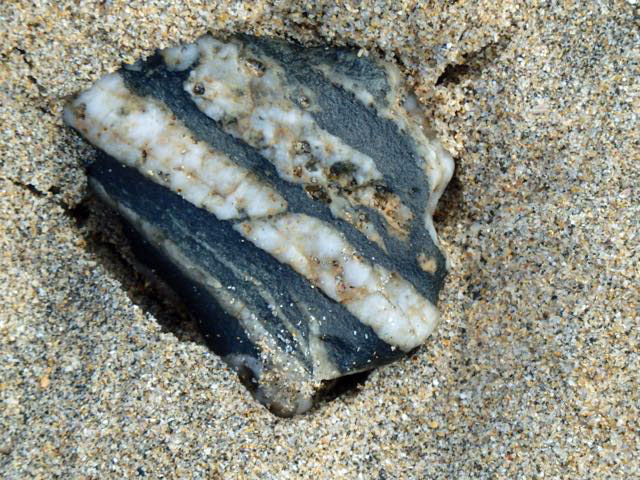
Saturday 12 March 2016
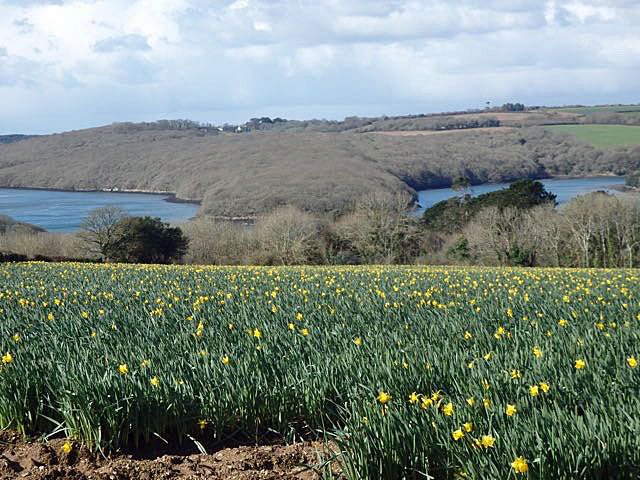
The daffodil fields above Helford village had opening flowers when we were in Cornwall at Christmas. Now the fields are fully in bloom, with neat ranks of yellow trumpets leading down to the river.
Sunday 13 March 2016
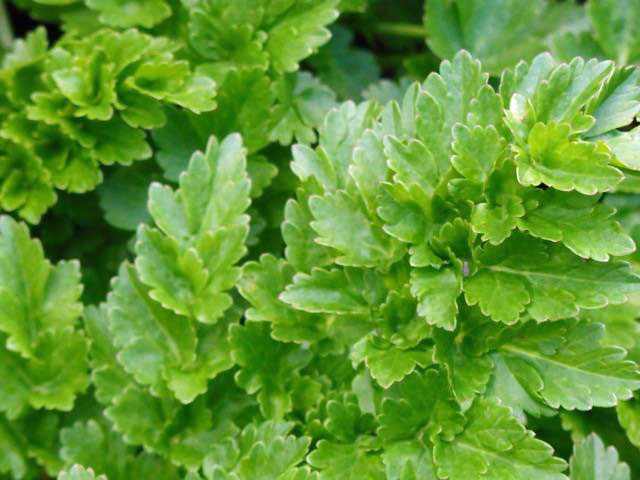
There are a few wild flowers out in the Cornish woodlands and lanes – some primroses, a spattering of celandines, and even a few greater stitchwort. But now is the time to really appreciate the leaves of many of these flowers, their shape, their colour, their texture.
Circular butterbur pads grow thickly along the banks of the Helford river. Frilled fans of Alexanders grow in tight leaf clusters, shooting out wherever there’s light.
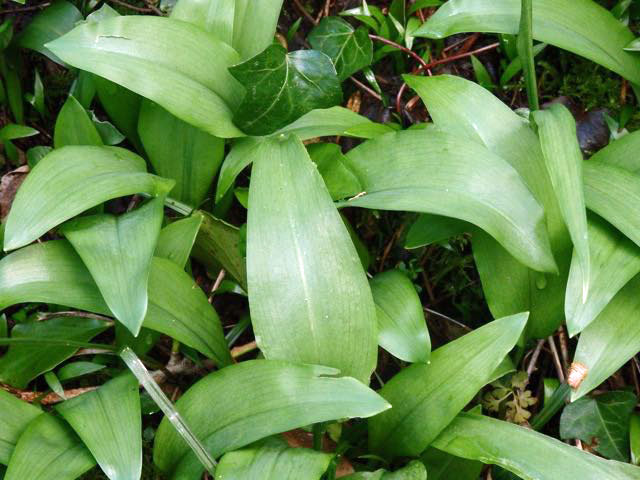 Wild garlic has spread wide light green curving straps, and is already exuding a faint scent, even though I couldn’t see a single flower among all the leaves.
Wild garlic has spread wide light green curving straps, and is already exuding a faint scent, even though I couldn’t see a single flower among all the leaves.
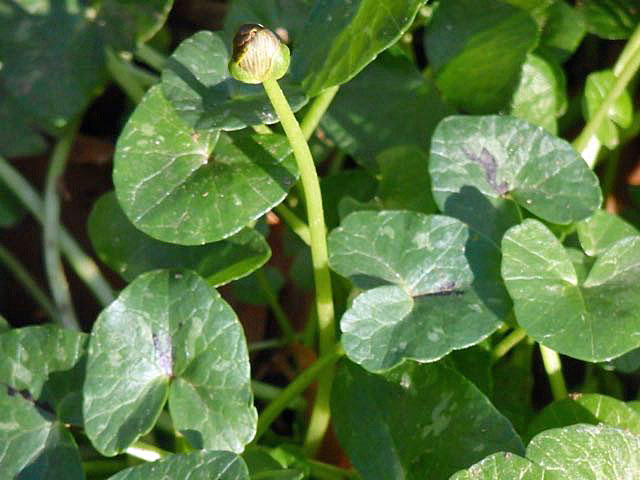 The flat arrowheads of celandines are held up on thin stems, with here and there a bud held aloft, waiting to open.
The flat arrowheads of celandines are held up on thin stems, with here and there a bud held aloft, waiting to open.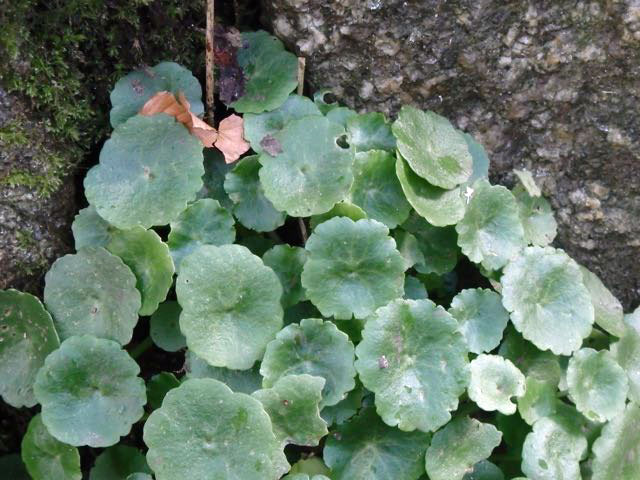 The tiny plate-like leaves of navelwort cluster at the foot of a rock, as if they’ve been left there to dry. The slender narrow leaves of bluebells carpet one woodland I visit, giving promise to a fine display of flowers later in the year.
The tiny plate-like leaves of navelwort cluster at the foot of a rock, as if they’ve been left there to dry. The slender narrow leaves of bluebells carpet one woodland I visit, giving promise to a fine display of flowers later in the year.
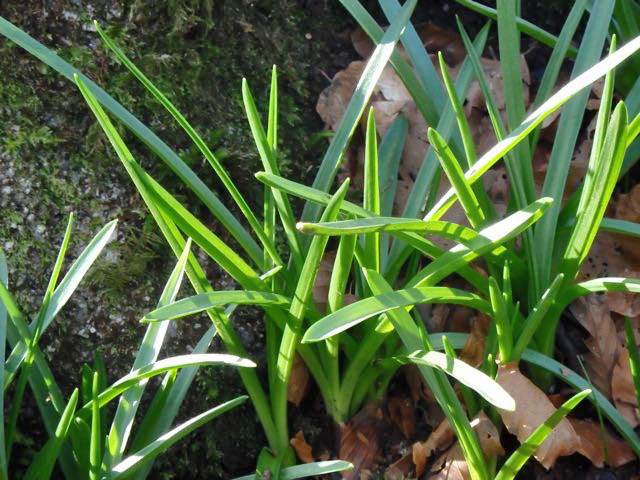
Monday 14 March 2016
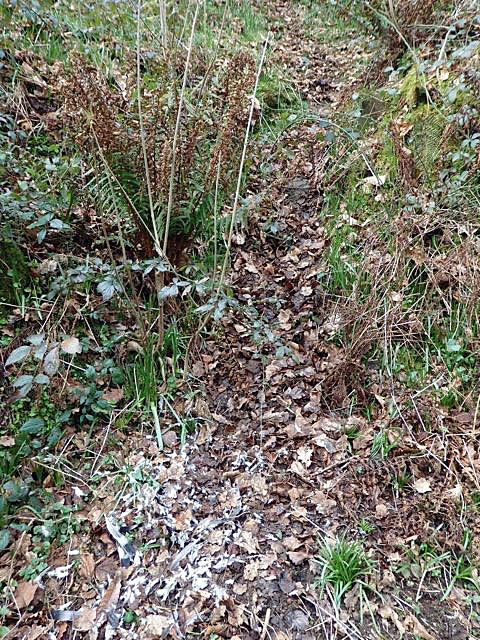
The scattered feathers, black and white, marked the foot of a channel of dried leaves down the slope above the stream in the Cornish woodland. It was a noticeable passageway among the ferns and rocks, used by local wildlife, badgers, foxes, perhaps deer. One of the former had dined well, and possibly luckily, on a magpie.
Tuesday 15 March 2016
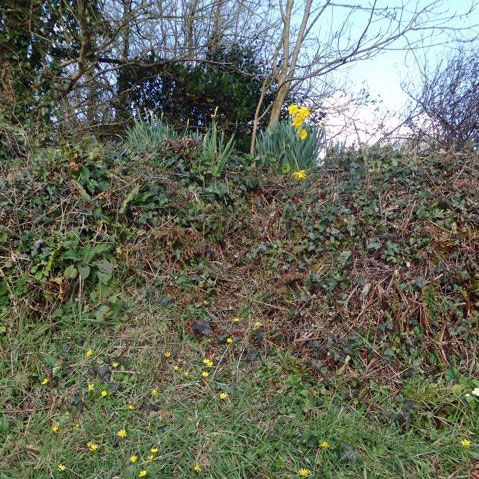
Daffodils have escaped from the fields to colonise the land around. They stand tall against mossy stone walls, grow in bright stands under the lichened branches of oak and beech, and sometimes crown the tops of Cornish hedges, flourishing splendidly among the brambles.
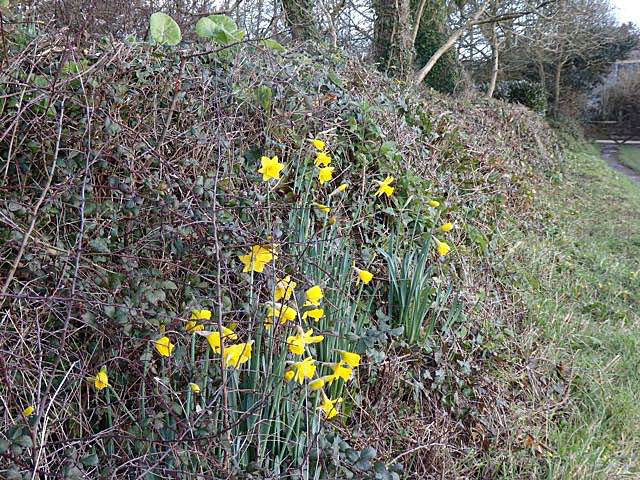 Many still grow in the fields where the bulbs were first planted, even though the fields are pastures now.
Many still grow in the fields where the bulbs were first planted, even though the fields are pastures now.
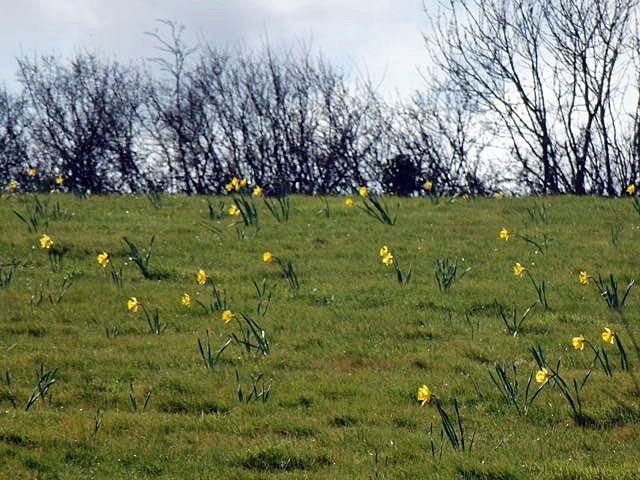
Wednesday 16 March 2016
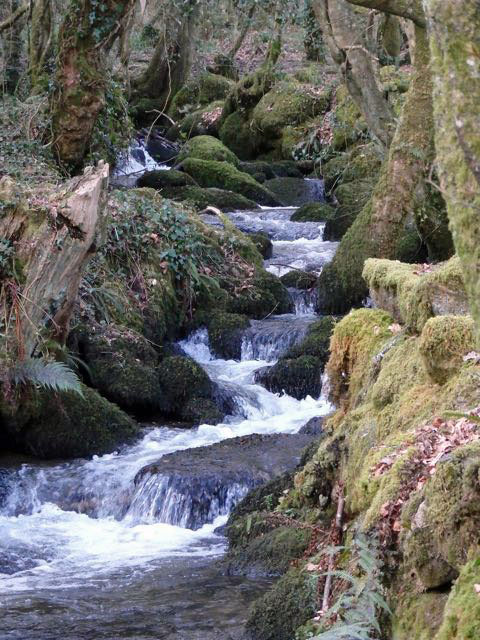
There are water gardens in the Cornish woodland. Moss and ivy frames a view of white edged water tumbling down a series of steps. Submerged branches and roots allow water-loving plants to flourish. 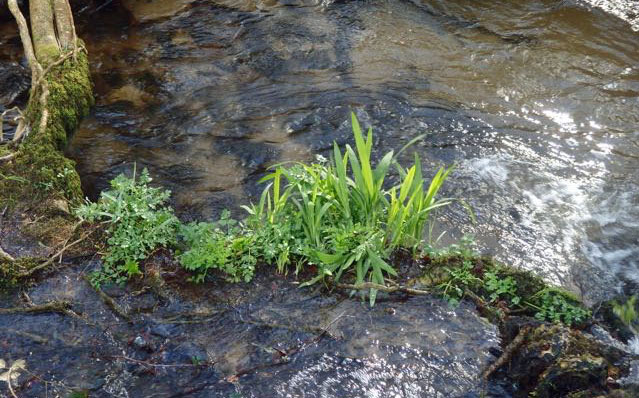 The divided trunk of a tree forms a green bridge over the water and a home for a fringe of ferns that enjoy the moist atmosphere.
The divided trunk of a tree forms a green bridge over the water and a home for a fringe of ferns that enjoy the moist atmosphere.
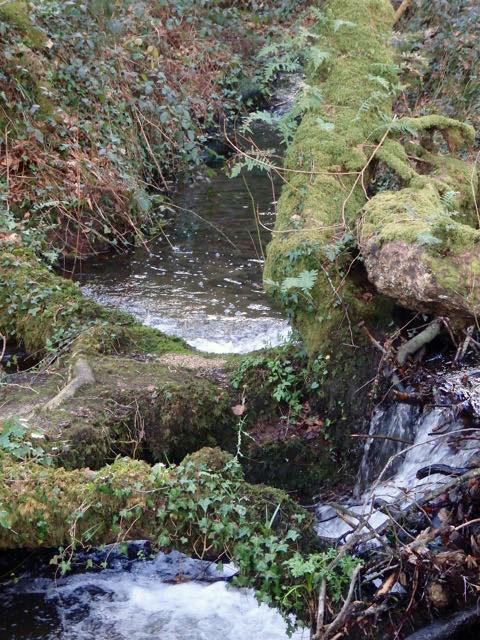
Thursday 17 March 2016
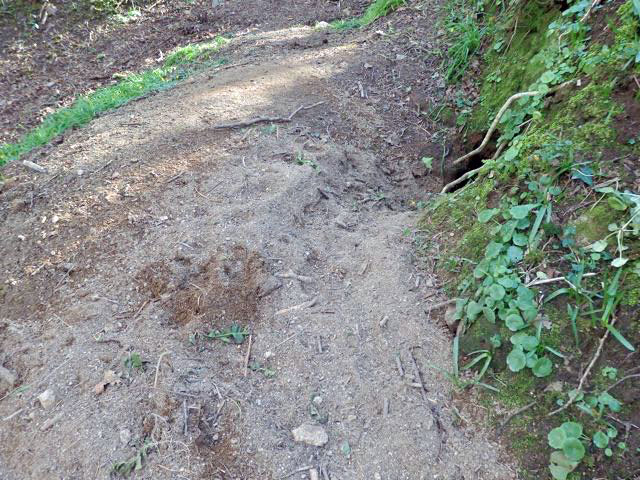
Badgers have been busy in the Cornish woodland. A heap of light sandy soil has been piled outside one sett entrance, so either existing chambers have been enlarged or new ones have been excavated. 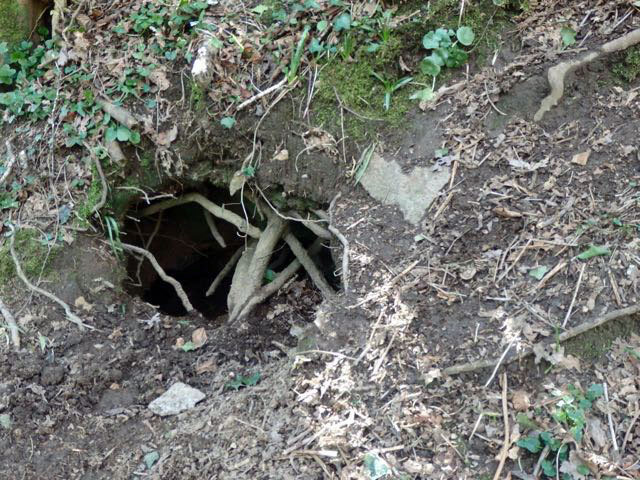 And nearby was another entrance, neatly hidden under tree roots, beside a well-used path up to the meadow above.
And nearby was another entrance, neatly hidden under tree roots, beside a well-used path up to the meadow above.
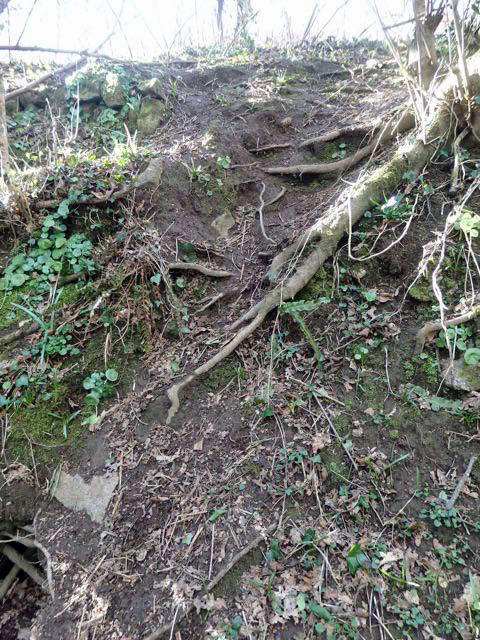
Friday 18 March 2016
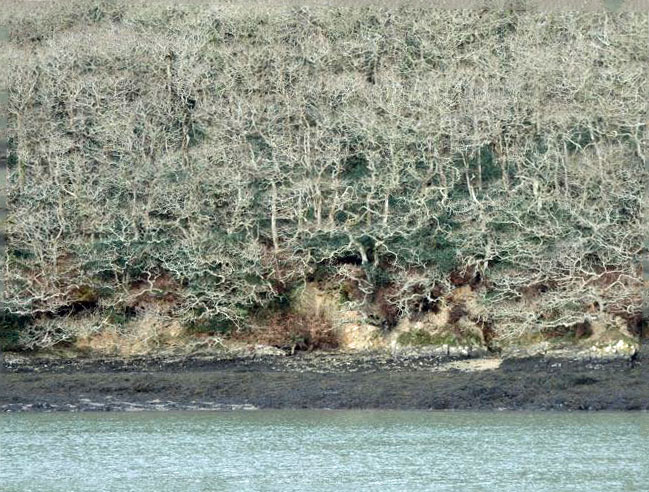
The far bank of the Helford was striped with colour. The tide had revealed the blackened layer of seaweed below the bleached granite of the bank, while above bands of holly were interspersed with swathes of bronzed bracken. And over all was a lattice of pale lichened oak trunks and branches.
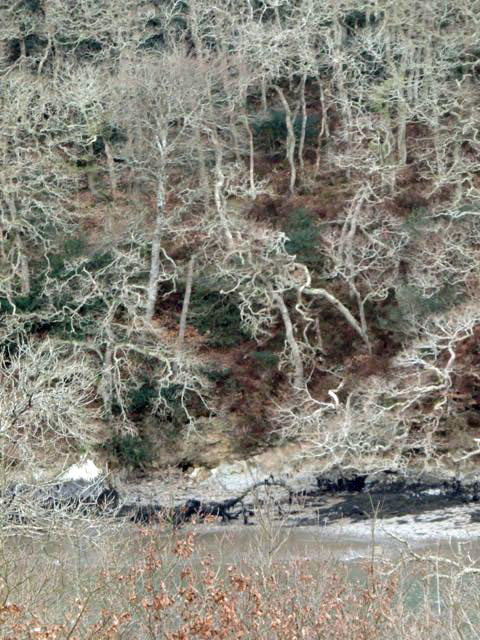
Saturday 19 March 2016
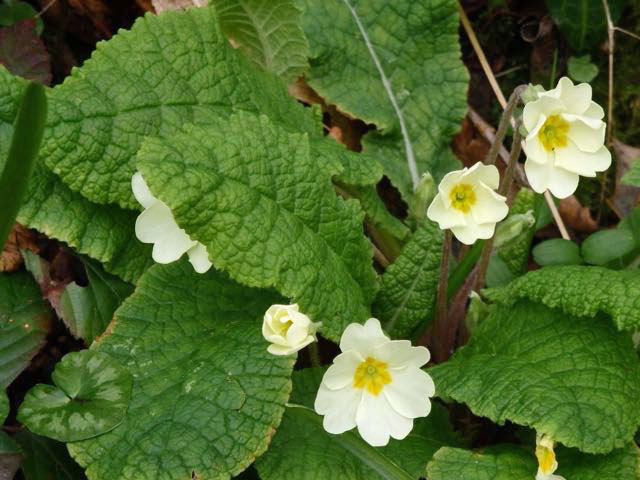
Primroses are flowering in the Cornish woodland that fringes one of the Helford creeks. 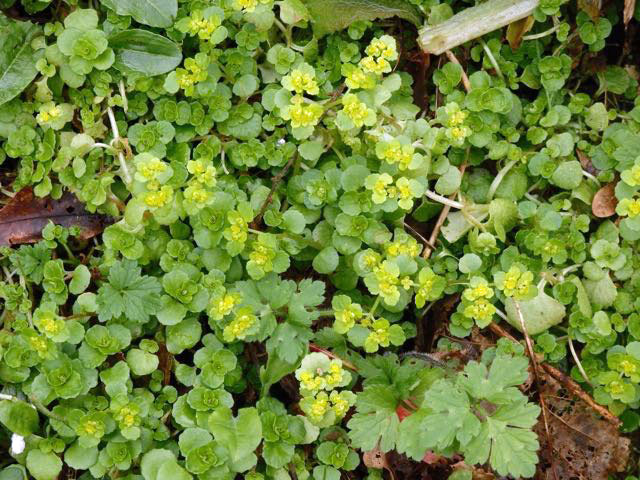 Chickweed florets are lime-green across wide patches of the ground, and sorrel (below) grows in untidy clumps.
Chickweed florets are lime-green across wide patches of the ground, and sorrel (below) grows in untidy clumps. 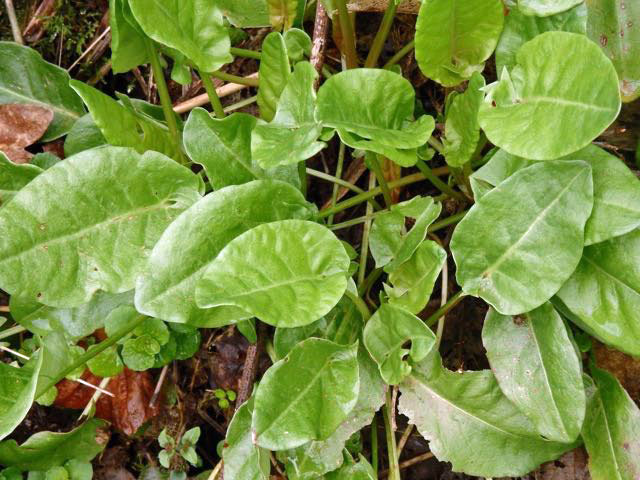
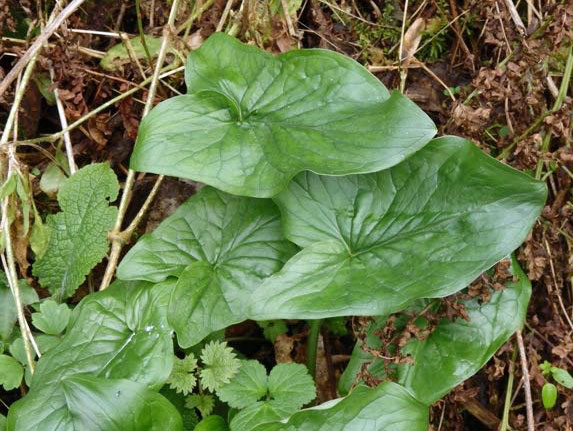 The flat wide arrowheads of wild lilies rise above the leaf mould and the felted leaves of foxgloves (below) are prominent features.
The flat wide arrowheads of wild lilies rise above the leaf mould and the felted leaves of foxgloves (below) are prominent features.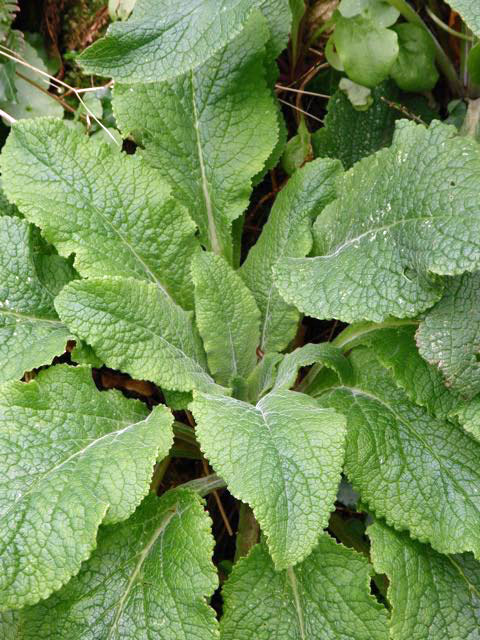
Sunday 20 March 2016
A single black calf stood on the heather-clad uplands of Dartmoor. Around him gorse was in bright yellow bloom, and above larks were singing. In the distance a column of black smoke rose and spread into a cloud, not the sign of a marauding foe approaching, but the last of this winter’s swayling, the burning of the heather to generate fresh growth.
Monday 21 March 2016
The woolly head on the long neck was reared high above the stone-walled field as we approached the corner of the Dartmoor lane. The male alpaca turned his head to watch us pass by, then turned his attention back to the other side of the lane. In the field here, higher up the slope, a couple of men were clearing wood from a copse and the herd of female alpacas had gathered to watch them.
Tuesday 22 March 2016
Piles of twiggy debris lined the edges of the field where the hedges on both sides of the Dartmoor lane had been recently laid. The woven stems looked stark, but will soon burst into leaf and grow into a thicker, more stock-proof hedge. This will also be home to many creatures, including nesting birds. For us as we passed by, the view of the tors to the east had suddenly been opened up, giving us a new perspective of their grandeur and the steepness of the path we take over them.
Wednesday 23 March 2016
I recently saw a barn full of young donkeys released into their spring pasture. After a winter in the yard the joy of being out on the grass was enormous. The forerunners began to run across the steep slope, bucketing up and down in excitement. As those still inside at the troughs released what was happening they left their food and joined the queue to go out, until at last the whole herd was in the spring sunshine. Here and there, one lay down and rolled over the fresh grass, while others nudged their companions and began to gallop around, making the most of the space they hadn’t had since late autumn.
Thursday 24 March 2016
A buzzard circled, landing in a tree on one side of a steep Devon field. On the other side another bird descended on the air currents to land in a facing tree. They seemed to be a pair, perhaps with a nest nearby.
Sunday 27 March 2016
A dunnock perches regularly each morning on a wisteria branch at the back of my house. He leans forward to look into the window, then taps repeatedly on it, before shifting position slightly to repeat the action. After a while he drops down to flutter against the glass before giving up and flying away.
At first I thought he was picking up tiny insects, but now I suspect he may see his reflection and be trying to frighten off a supposed opponent.
Monday 28 March 2016
A male blackbird flew across my path into town. He paused for a second on top of a fence, his eyes fiercely alert as he assessed the scene in front of him. A cluster of fine hairs were clasped firmly in his beak, and he was clearly on his way back to his nest building.
Tuesday 29 March 2016
A large yellow butterfly drifted upwards from the flowerbed in my front garden. For an instant it looked as though one of the primroses below had floated away, for the colours were so similar. But this was one of the first of this year’s Brimstones, a male who had perhaps been patrolling the hedge in search of emerging females. He was only visible in flight for a moment, before disappearing among the lilacs towards the ivy-covered fence.
Wednesday 30 March 2016
Two cock pheasants were facing each other beside the road. They were aggressively close, their red masked faces pushed forward. They pranced a little before darting towards each other, then pulling back.
I passed on before I saw the outcome of their confrontation.
More from this site
- 2017 Archive
- • January 2017
- • February 2017
- • March 2017
- • April 2017
- • May 2017
- • June 2017
- 2016 Archive
- • January 2016
- • February 2016
- • March 2016
- • April 2016
- • May 2016
- • June 2016
- • July 2016
- • August 2016
- • September 2016
- • October 2016
- • November 2016
- • December 2016
- 2015 Archive
- • January 2015
- • February 2015
- • March 2015
- • April 2015
- • May 2015
- • June 2015
- • July 2015
- • August 2015
- • September 2015
- • October 2015
- • November 2015
- • December 2015
- 2014 Archive
- • January 2014
- • February 2014
- • March 2014
- • April 2014
- • May 2014
- • June 2014
- • July 2014
- • August 2014
- • September 2014
- • October 2014
- • November 2014
- • December 2014
- 2013 Archive
- • January 2013
- • February 2013
- • March 2013
- • April 2013
- • May 2013
- • June 2013
- • July 2013
- • August 2013
- • September 2013
- • October 2013
- • November 2013
- • December 2013
- 2012 Archive
- • January 2012
- • February 2012
- • March 2012
- • April 2012
- • May 2012
- • June 2012
- • July 2012
- • August 2012
- • September 2012
- • October 2012
- • November 2012
- • December 2012
Extracts from the novels
Submit your comments
If you have any comments, please send them in. They may be published on the site.